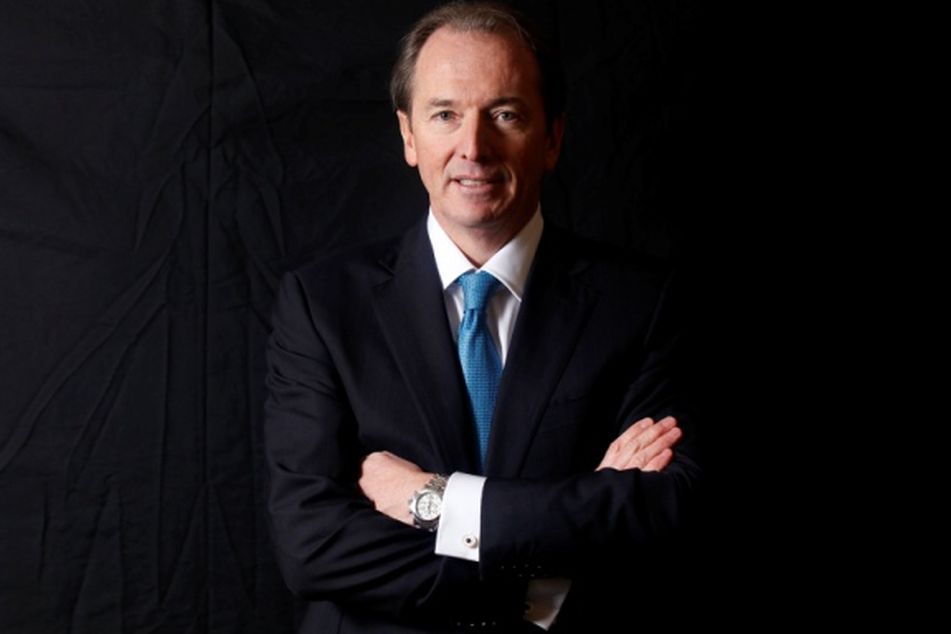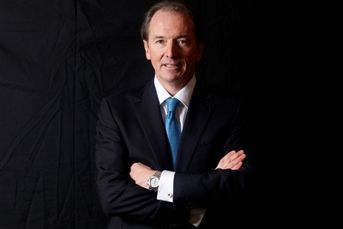Is new-look Morgan Stanley returning to its glory days?
 CEO Gorman: 'Unambiguously business not as usual'
CEO Gorman: 'Unambiguously business not as usual'
Wall Steet giant almost unrecognizable after makeover led by James Gorman; better model?
Like it or not, Wall Street, your industry has a new visionary: James Gorman, the 51-year-old, Australian-born chief executive officer of Morgan Stanley.
Yes, other Wall Street bigwigs such as Lloyd Blankfein at Goldman Sachs Group Inc. (GS) and Jamie Dimon at JPMorgan Chase & Co. (JPM) get more attention. But Gorman stands out because he has chosen the opposite tack of the leaders at other major global financial services companies, who are still hopeful the status quo on Wall Street will be resurrected by the time the rest of the new Dodd- Frank rules and regulations get written next year.
“We are unambiguously business not as usual,” he told the Financial Times last week, “and have dramatically changed the shape of our firm.”
Indeed he has. Once upon a time — way back in 2008 — Morgan Stanley, under CEO John Mack, was virtually indistinguishable from its archrival Goldman Sachs and was in many of the same lines of business as Merrill Lynch, Lehman Brothers and Bear Stearns. In less than three years, Gorman has transformed the place.
“This is a firm that had a tiny wealth management business a few years ago,” he said, “had underinvested in fixed-income, had underinvested in infrastructure, ran a hedge fund that was unprofitable. … We had a lot of problems and were doing a lot of swings for the fences in the merchant bank. We’ve cleared all that stuff out.”
Glory Days
Gorman has decided, correctly, that rather than hope for a revival of the glory days on Wall Street when return on equity was more than 20 percent — most often because traders were swinging for those fences — the time has come to refashion Wall Street into a lower-risk, presumably far safer enterprise that helps companies raise capital whenever and wherever they need it around the globe, provides them with advice on mergers and acquisitions, and offers institutions and individuals wealth management expertise.
Gorman is focused on getting Morgan Stanley (MS)’s return on capital up to 10 percent from the paltry 5 percent it is today. He said that was “much more interesting” than getting back to the higher returns from the glory days, which turned out to be “completely flawed anyway” because the billions of dollars in profits disappeared in huge write-offs during the financial crisis.
Gorman, a former McKinsey & Co. management consultant, has decided to focus on lower-beta, fee-generating businesses in his quest to reduce Morgan Stanley’s risk. In buying what used to be called Smith Barney from Citigroup, Gorman has made a multibillion-dollar bet on the retail brokerage business. Morgan Stanley now has about 15,000 brokers, second only to the Merrill Lynch subsidiary of Bank of America. (Gorman used to run the brokerage business at Merrill before getting recruited by Mack to Morgan Stanley in 2006.)
Gorman is not junking the firm’s institutional trading business (not yet, anyway). But the days are gone when a single trader at Morgan Stanley could cost the firm $9 billion and almost send it into oblivion, as Howard Hubler did in 2007. Gorman is not waiting around to see what the final standards of the Volcker Rule allow, or don’t allow, when it comes to proprietary trading.
“We don’t do prop trading,” he said. “We wouldn’t allow it. We don’t do it. We don’t have treasury functions that run as little hedge funds” — an unsubtle swipe at JPMorgan Chase and its recent $5.8 billion “London Whale” trading loss.
Lonely Crusade
Another element on the Gorman reality tour is the idea of scaling back Wall Street’s out-of-control compensation system, which encourages bankers and traders to take big risks with other people’s money. He started this lonely crusade in January at the World Economic Forum in Davos, Switzerland. During an interview with Bloomberg Television, he said banking had changed drastically because of the financial crisis and pay for bankers and traders had to adjust, too. In 2011, he capped cash bonuses at the firm at $125,000, reduced pay by about 25 percent and deferred large portions of what bonuses were awarded.
“If you’re really unhappy, just leave,” Gorman said. “I mean, life is too short.”
He seems to be the only Wall Street executive willing to say publicly that pay must come down if the big banks are serious about their fiduciary responsibility to shareholders. Pay is, after all, the largest variable cost on Wall Street, often reaching 50 percent or more of revenue.
“There’s way too much capacity and compensation is way too high,” he said last week. “As a shareholder I’m sort of sympathetic to the shareholder view that the industry is still overpaid.” To be sure, the jury of shareholders is still out on the Gorman experiment: Morgan Stanley’s stock is trading around $17.50, below its recent high of $21 a share in March.
I suspect that will change soon. Gorman’s strategic moves are enough to convince one natural born skeptic, Mike Mayo, a financial-industry research analyst at Credit Agricole SA (ACA), to recommend Morgan Stanley’s stock for the first time in years. “The stock is valued as if it is a Greek or Spanish bank but its risk is far less,” he wrote in an e-mail to me. For Morgan Stanley to return to its glory days, he said, margins need to be improved in asset management, fixed-income trading needs to be further slimmed down and the core investment-banking franchise needs to be maintained and reinvigorated.
Good advice. A firm built around lower risk-taking and lower overall pay while still providing clients with the advice and capital they need to innovate and expand is what we need on Wall Street. It’s the vision of one man taking seriously his responsibility to make the capital markets safe and productive for economies all over the world, instead of just some casino gone haywire where the house absorbs the losses and the profits go to the gamblers. The question is whether other leaders on Wall Street will follow Gorman’s example.
(William D. Cohan, the author of “Money and Power: How Goldman Sachs Came to Rule the World,” is a Bloomberg View columnist. He was formerly an investment banker at Lazard Freres, Merrill Lynch and JPMorgan Chase. The opinions expressed are his own.)
Learn more about reprints and licensing for this article.




